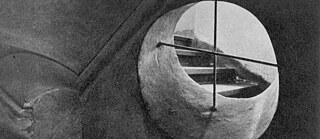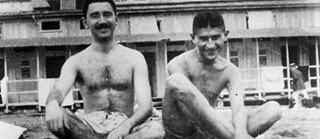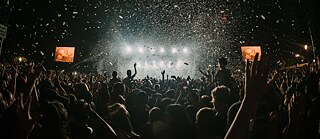Kafka’s humour The big laugher

Kafka is a writer of dark, nightmarish tales? – Perhaps, yes. But this is too superficial a view. Let us embark on a quest for the comical in Kafka.
One persistent literary misunderstanding is that Franz Kafka’s writing is characterized above all by melancholic or morbid visions – and that Kafka himself was first and foremost a self-torturing reporter of misfortune. As the publisher Klaus Wagenbach writes in his 2018 book Ein Käfig ging einen Vogel suchen – Komisches und Groteskes (A Cage Went in Search of a Bird – The Comical and the Grotesque), the words “Kafka” and “Kafkaesque” have come to be synonymous with things that have become “detached” from the author’s oeuvre: with all things dark and incomprehensible, and with an interpretation that regards Kafka as “a prophet” and a “patron saint” for all those “to whom life appears hopeless”.That Kafka’s work also has a humorous side that is just as important, indeed just as “Kafkaesque”, as his darker sides is something that is overlooked time and again, as many Kafka experts have stressed repeatedly over the years. There are doubtless various reasons for this.
There is the fact for instance that many people appear to know more about certain aspects of Kafka’s life than they do about his work itself: about Kafka’s poor relationship with his father, about his failed love affairs, his dissatisfaction with his work as an insurance clerk, his early death from tuberculosis ... Then we have the interpretation that claims Kafka predicted the crimes of National Socialism – a reading of Kafka that critics such as James Hawes, in Excavating Kafka (2008), see as extremely problematic. And then there is even the fact that many people, when they think of Kafka, automatically have in their mind’s eye a famous photograph, taken in 1923, that portrays him in the final phase of his illness: gaunt, with deep-set eyes and sunken cheeks. Yet other images of Kafka also exist that show him in a quite different state – namely in a good mood. (Incidentally, as Wagenbach explains, the aforementioned photograph was retouched “in the 1950s in the advertising department of the Fischer Verlag” publishing house in order to accentuate his “mystical” qualities.)
Last but not least, a certain intellectual distrust of humour and wit probably also plays a central role in all this: the notion that the latter are the opposite of philosophical and emotional depth – rather than facets of it.
As Astrid Dehe and Achim Engstler write in their 2011 book Kafkas komische Seiten (Kafka’s Comical Sides), Kafka was indeed a “restless person who repeatedly and almost obsessively failed” – though also a person full of humour. We read in his letters and diaries about his fits of laughter at work and the ludicrous situations he encountered while travelling. His friend Max Brod tells us that Kafka laughed so much while reading The Trial aloud “that at times he was unable to continue reading”. And Kafka himself wrote to his first fiancée, Felice Bauer: “I can also laugh […], I am even known as a big laugher”.
According to Dehe and Engstler, much in Kafka’s writings “is calculated to produce a comical effect”. And indeed, anyone who reads his texts attentively – or reads them at all – will find numerous humorous passages. These are perhaps not funny in the “merry” sense of the word; instead, Kafka’s humour is sharp-witted and includes among other things the ironic, the grotesque, the satirical, the malicious and of course the absurd.
“Just don’t stay in bed being useless!”
Here are just a few of Kafka’s comical scenes to encourage further reading: Gregor Samsa, the hero – or rather antihero – of Metamorphosis, wakes up one morning to find himself transformed into a beetle. As Dehe and Engstler write, this fact would probably come as something of a shock to any “normally minded person”. This travelling salesman, however, is upset by the fact that he has missed his train. “Oh God‚ what a strenuous career it is that I have chosen!”, he thinks. Samsa discovers that he has six “little legs” and an armour-plated body, and that his voice sounds like “distressed chirping”. Yet for a number of pages he mainly thinks that what ails him is surely “nothing more” than “the first sign of a bad cold”. Later, when his transformation makes him unable to get out of bed, he says to himself: “Just don’t stay in bed being useless”!In the face of this petit bourgeois individual’s imperturbability, servile concerns and entirely inappropriate reaction – what else could the reader possibly do (initially) but laugh?
Slapstick
The particular comedy in many of Kafka’s scenes, which involve people falling over, hitting one another or moving mechanically or awkwardly, has often been described as Kafka’s own “slapstick” method. This is a reference to that form of film comedy, originally found in early silent films, which is physical, wordless and usually violent – and extremely funny in a clownish sense.Such a scene can be found in The Trial: at one of the ominous courts that are omnipresent in the novel, an old lawyer is determined to prevent his colleagues from entering the office. And this is how he did it: “After working for twenty-four hours with probably very little result, he went to the front entrance, waited there in ambush, and every time a lawyer tried to enter the building he would throw him down the steps,” writes Kafka. The lawyers agreed that they would try to tire the old man out. “One lawyer after another was sent out to run up the steps and let himself be thrown down again, offering what resistance he could as long as it was passive resistance, and his colleagues would catch him at the bottom of the steps. That went on for about an hour until the old gentleman, who was already exhausted from working all night, was very tired and went back to his office ...”
Meticulous descriptions
It is also evident that Kafka takes an obsessive pleasure in meticulously describing bodily or indeed physical processes in general. This gives rise to some horrific depictions, such as of the methods of torture in his short story In the Penal Colony – but also to some bizarre scenes.Examples of the latter can be found in A Report for an Academy, in which an ape explains how he came to become an imitator of humans. “It was so easy to imitate these people,” the ape says, pensively, at one point. “I could already spit on the first day. We used to spit in each other’s faces; the only difference was that I licked my face clean afterwards. They did not.” The description of how the protagonist became human is often painful yet at the same time is so bizarre that one cannot but shake one’s head – and laugh dumbfoundedly.
Many scenes in Metamorphosis produce a similar effect – such as when Kafka describes the awkward attempts by Samsa, following his transformation into a beetle, to get out of bed and leave his room: “It was very easy to throw aside the blanket; he needed only to push himself up a little, and it fell by itself. But to continue was difficult, particularly because he was so unusually wide. He needed arms and hands to push himself upright. Instead of these, however, he had only many small limbs which were incessantly moving with very different motions and which, in addition, he was unable to control. If he wanted to bend one of them, then it was the first to extend itself, and if he finally succeeded in doing with this limb what he wanted, in the meantime all the others, as if left free, moved around in an excessively painful agitation.”
Confusing tales of morality
Kafka’s work is rich in short parables that appear full of deeply moral wisdom. The problem is that when we reach the end of them – which is normally where the moment of enlightenment comes – it is impossible to understand what lesson we are supposed to have learnt!This is the case in A Little Fable, in which a mouse exchanges a few profound words with a cat – and is then eaten up – as well as in Before the Law; and even more obviously in On Parables, which begins with the following reflection:
“Many complain that the words of the wise are always merely parables and of no use in daily life, which is the only life we have. When the sage says: ‘Go over’, he does not mean that we should cross to some actual place, which we could do anyhow if the labour were worth it; he means some fabulous yonder, something unknown to us, something too that he cannot designate more precisely, and therefore cannot help us here in the very least …” It continues in this vein and the conclusion of the text is confusing in a – somehow – amusing way.
Valiant commentators have attempted to decipher these texts, claiming they are allegories of Kafka’s work, of his life, of “things spiritual”, et cetera. Aha. It is more that one gains the impression that Kafka is above all playing a game – a game with words, with the reader’s expectations, with the genre of parables itself. Perhaps the literary scholar Beda Allemann was right when he wrote of Kafka’s incomprehensible parables that they are full of “diabolic irony par excellence”.


